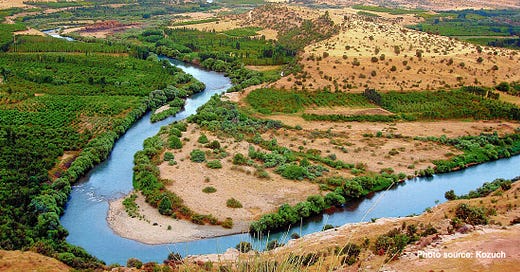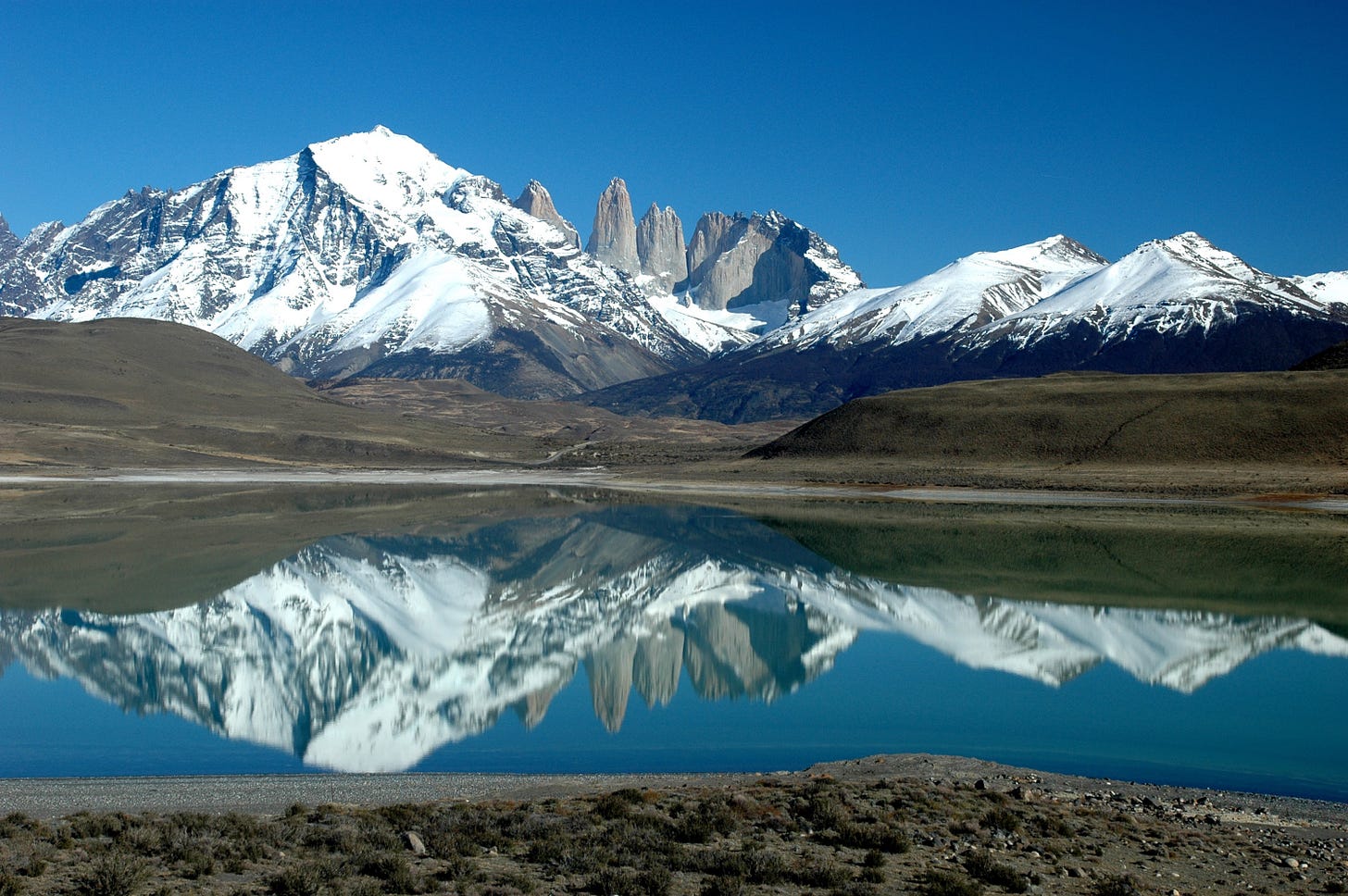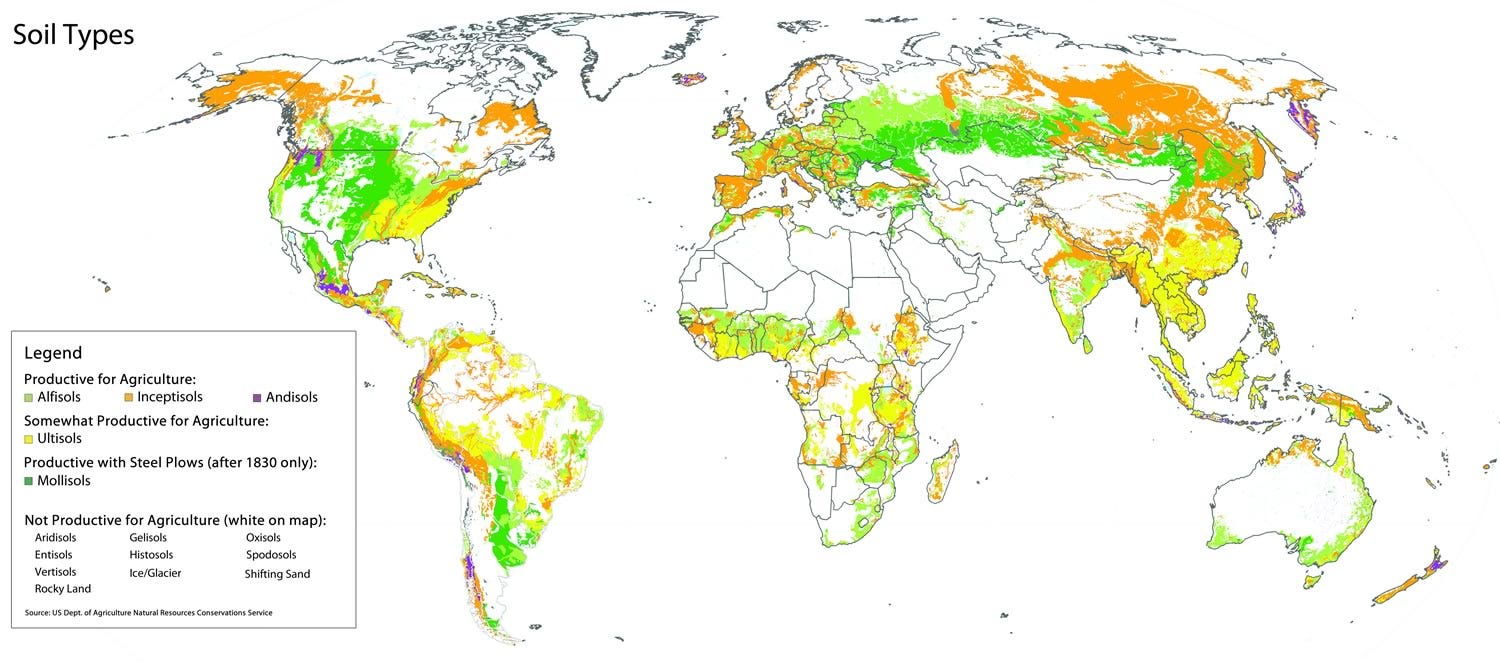How geography has constrained human progress
Rivers, Altitude, Soil and Growing Seasons
This is my fourth post on the role of geography in the history of human material progress. I would recommend reading the first, second, and third excerpts before reading this one.
See also my articles on related posts:
Most of the following is an excerpt from my first book From Poverty to Progress: Understanding Humanity’s Greatest Achievement. You can order my e-books at a discounted price at my website, or you can purchase full-price ebooks, audiobooks, paperback, or hardcovers on Amazon.
Other books in my “From Poverty to Progress” book series:
Rivers
Many of history’s most important cities have been located on the banks of great rivers. While rivers are not essential for the development of complex Agrarian cities, they do make them far more likely. If a region has other geographical factors that promote the development of complex Agrarian societies and there is a river within that area, a large city will likely evolve on its banks.
Rivers offer crucial advantages to human development; they:
Offer sources of (hopefully) clean drinking water.
Make it easier to remove human waste.
Offer sources of irrigation for crops.
Deposit additional nutrients in the soil for growing crops.
Enable cost-effective transportation of people and freight.
Offer defensible lines to block the approach of enemy armies.
While rivers are common in many regions, not all rivers are useful for Agrarian societies. In most cases, the river must be located in a biome that enables plow-based agriculture (as mentioned above). In some cases, as in the Desert and Seasonal Tropical Forest biomes, rivers can effectively create little islands of agriculture within an otherwise hostile biome.
In addition to being located in a hospitable biome, to support complex societies, rivers must have all or almost all of the following characteristics; they must be:
Substantial in width, so that enough water is carried.
Navigable by large boats (to facilitate trade)
In flow all year-round, particularly near the mouth
Emptying into an ice-free ocean year-round
Free from large cataracts or waterfalls (except near their upstream source)
Free from large marshes near their mouth.
To fulfill all of these qualifications, a long section of river must be located on gently sloping terrain, but not so gently sloping as to allow the formation of marshes. Many rivers do not have long stretches such as this, a key barrier to the development of complex Agrarian and Commercial societies.
Those that do, however, have huge geographical advantages over neighboring regions. It is not a coincidence that the vast majority of Agrarian civilizations were based on rivers, including the:
Tigris-Euphrates rivers in modern-day Iraq
Indus river in modern-day Pakistan
Yellow, Yangtze, and Pearl rivers in modern-day China.
Ganges river in modern-day India
Ganges-Brahmaputra-Megha river basins in present-day India and Bangladesh.
Irrawaddy River delta in present-day Burma.
Chao Phraya River delta in present-day Thailand.
Mekong River basin in present-day Cambodia and Vietnam.
Red River delta in present-day Vietnam.
Altitude
While biomes and rivers are the most important geographical constraints on the development of human societies, there are others. As Joel Cohen and Christopher Small have shown, altitude is also an important constraining factor. While landmass on Earth varies in altitude from just below sea level to 10,000 meters above, about 73.7 percent of humanity inhabits altitudes of less than 500 meters above sea level.
Plains offer many advantages over highlands, particularly in Temperate latitudes. Soil tends to concentrate on coastal plains after having been carried down from the mountains by runoff from rain and snowmelt. The steeper the grade on the mountainside, the more denuded the soil on the slopes. Some of that soil is deposited in mountain valleys, but given that most valleys are relatively small in size, flat plains below mountains tend to have far deeper topsoil.
Mountains also create substantial barriers to transportation. While horses, carts and wagons can range widely over the plains, they have an extremely difficult time on steep mountains. For this reason, transportation in mountainous regions is often constrained to valleys and passes.
In tropical latitudes, altitude has some counter-veiling advantages. Plains in Tropical Forest regions are often death traps to those without biological immunities, with endemic malaria, dengue, sleeping sickness, tsetse flies and other debilitating diseases.
For this reason, tropical populations in forested regions tend to be concentrated in altitudes between 1500 to 3500 meters. Central Mexico, the Andes and South-Central Asia are the most important examples of relatively dense human populations at high altitudes
Soil
Because agriculture is key to feeding dense human populations, the type of soil in a region is critical to its ability to support complex societies. Soil is the combination of weathered rock, air, water and organic matter from decomposing plants and animals.
Because the dominant vegetation makes up the bulk of the organic matter, soil can be thought of as fossils left over from ancient biomes. Some biomes, such as Temperate Forests, tend to have rich soils, while most other biomes have unproductive soils for agriculture. There are also important regional variations that make some areas unexpectedly productive or unproductive.
The US Department of Agriculture has developed a soil taxonomy that is very useful for classifying soils by their potential productivity for agriculture. To simplify their system, I have grouped soil types into three categories based upon their potential for agricultural production: Productive, Somewhat Productive and Unproductive. Each category denotes the productivity for agriculture, not plants in general.
Alfisols (light green on the map) and Inceptisols (orange on the map) are both productive soil types for agriculture. Easily worked by humans using hoes or animal-driven plows, these two soil types have been a foundation for agricultural societies for centuries.
Notice that these soil types are far more common in Europe, East Asia, South Asia, Australia and New Zealand than in the rest of the world. Together they cover about 25 percent of ice-free land (10% for Alfisols and 15% for Inceptisols).
Somewhat less productive, but still capable of supporting agricultural societies are Ultisols (yellow on the map). Because this soil type is much older than the previously mentioned soil types, its nutrients have tended to be leached over time. Despite this weakness, this red clay soil was the foundation of civilizations in Southern China, Southeast Asia, Korea, Japan and the Southern USA. Ultisols cover about 8% of ice-free land.
One very rare soil type that is a bit of a wild card in terms of its agricultural productivity is the volcanic Andosols (purple on the map). While many stretches of this soil type have not supported agriculture, sections of Andosols were critical to the civilizations in Mesoamerica, the Andes, Java and Japan. Andosols cover only about 1% of ice-free land.
The most productive soil for agriculture that covers large areas is Mollisols (dark green on the map), which covers seven percent of ice-free land. Mollisols are deep, rich soil with a high content of organic matter. This soil type is largely found beneath Temperate Grasslands in North America, Ukraine, Central Asia, the Fertile Crescent and Argentina. This incredibly rich soil is the foundation of many of the most agriculturally productive regions in the modern era.
The dense root mat that gives the soil its richness is, unfortunately, also the primary problem with exploiting this soil. Until the invention of the steel plow in the 1830s, humans could only break the sod with a huge amount of effort. This made dense human populations unlikely on this soil type until after the 1830s.
While the other seven soil types are theoretically capable of supporting agriculture in some circumstances, they have not done so in practice. This means that 61% of ice-free land is highly unlikely to ever support the dense human populations that are necessary to promote innovation and progress.
Growing Season
Even if a region has a desirable biome, low altitude and agriculturally-productive soil types, other factors can preclude the development of productive agriculture. Even in areas that have all the necessary factors, some days are too hot; some days are too cold; some days have too much rain and other days have too little rain. One or two days of any of the above are not a problem, but if those days are strung together for weeks or months, agricultural production is seriously constrained.
The International Center for Agricultural Research in the Dry Areas (ICARDA) has created a metric called Growing Season, which defines whether a region has optimal amounts of sunshine and water on any given day. For a day to be defined as part of the growing season it must not be too hot, too cold, nor can it have too much nor too little precipitation. Unfortunately, I have only been able to find solid data for Eurasia and Northern Africa.
Just as we have seen from other geographical factors, only a few regions have a long enough growing season to support intensive agriculture. Southern China is by far the biggest region with a growing season of over 330 days per year. Parts of Korea, Japan, Burma and India are also blessed with extremely long growing seasons. Neighboring regions in upper Southeast Asia have Growing Seasons over 210 days per year.
The second large region with a Growing Season of over 210 days per year is the bulk of Europe. While Europe’s Growing Season is far shorter than Southern China’s, it is far longer than the remainder of Eurasia.
Entire swaths of Northern Asia, Central Asia, Western Asia and North Africa have very short or non-existent Growing Seasons. Like many of the other factors that we have mentioned previously, short Growing Seasons place a fundamental constraint on the evolution of productive agriculture, the first Key to Progress.
To read more on how geography constrained human material progress, see How progress spreads to neighboring societies.
See also my articles on related posts:
Most of the following is an excerpt from my first book From Poverty to Progress: Understanding Humanity’s Greatest Achievement. You can order my e-books at a discounted price at my website, or you can purchase full-price ebooks, audiobooks, paperback, or hardcovers on Amazon.
If you are interested in this topic, you should read my “From Poverty to Progress” book series:








